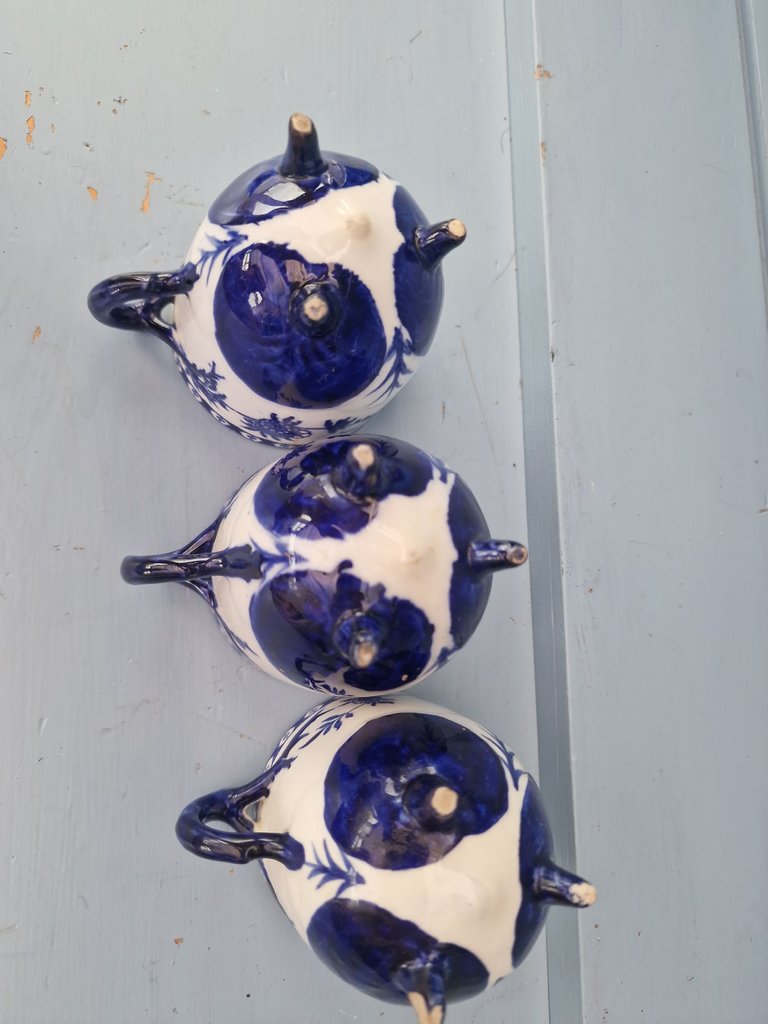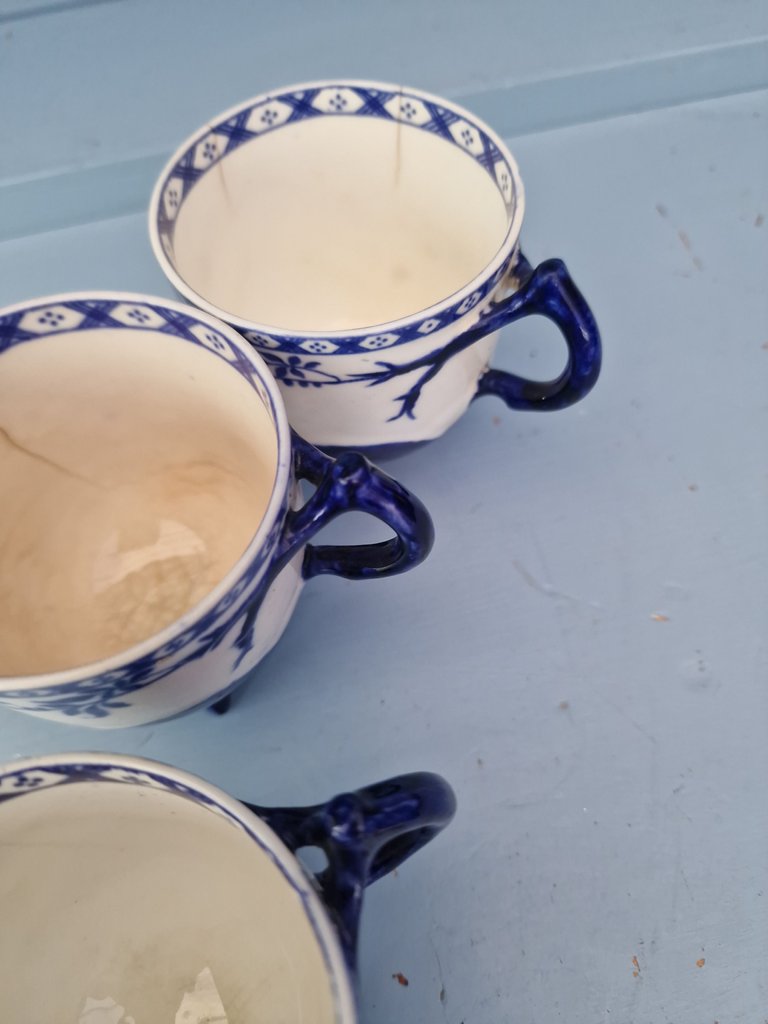Antique Cups

I'm not sure when I purchased these cups, it's been a few years now. Part of the reason I still have them is an unwillingness to sell them cheap. Lot's of items I'm happy to pass through and so long as I make a small profit it's all good. But some items are just a bit special.
What's special about these? from the pictures you can see there are cracks, and the quality of the printing is patchy and uneven.
Well, that printing is called Flow Blue. It was developed around 200 years ago in The Potteries, which were a hotbed of innovation in ceramics.
One of the developments of the era was an increase of items for home use. If you were in the upper classes such things were already part of your life, but lower down the cost of production and transport meant delicate tableware was too expensive. As mass production and decoration techniques advanced, and gentler transport methods (first the canals, then trains) became available costs dropped.
The shape of the cups is also quite delightful. The rounded bowl flowing up to the straight sides, and supported on three peg like legs gives each cup the unsettling look of some strange creature's udder. The handles are delightfully styled with an elegant curve which comes up to a branched joining to the cup. The decoration then flows round the cups from these branches. This design shows the cups were not mere utilitarian items, but something which looked to marry design and artistic merit.
There is no way of knowing exactly who used these cups, but we can make a guess at what they were used for. They are quite small, only 7cm to the rim. It's likely they were used for either chocolate or coffee, yes we do drink more than tea in Britain. Both beverages were increasing in popularity, but still expensive, so smaller quantities sipped from delicate cups fits right in to the late Regency Period.
These cups could have graced the table of some merchant family, but they could also have been used in any number of chocolate or coffee houses whose numbers had grown since both were introduced in the mid 17th century.
Now they exist as a reminder of a process by which things which were once exclusive to the rich gradually became available to everyone. If you want them you can see them on eBay, or drop me a line.


text and pictures by stuartcturnbull
The cups look really really pretty I must say. It'll be nice to have such beauty in the house.
#dreemerforlife